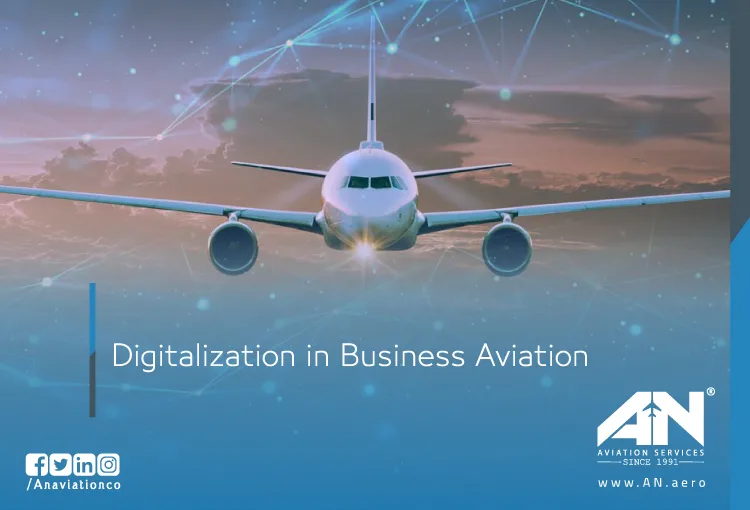
The aviation industry is no stranger to transformation, and in recent years, digitalization in aviation has become the cornerstone of innovation. The integration of digital technology into business aviation is not only reshaping operational efficiency but also redefining customer experience, decision-making, and cost-effectiveness. From automation tools to the power of big data, the journey toward a fully digital aviation sector is paving the way for smarter and more streamlined operations.
In this blog, we’ll explore how digital transformation in aviation is revolutionizing the business aviation landscape, enhancing everything from flight operations to air traffic management, and even improving environmental sustainability.
The Role of Digital Transformation in Aviation
At its core, digitalization in aviation involves leveraging advanced technologies such as artificial intelligence (AI), real-time data, and data analytics to streamline processes, reduce inefficiencies, and enhance customer service. Whether it’s simplifying flight operations, optimizing fuel consumption, or enabling predictive maintenance for aircraft design, digitalization has become integral to addressing challenges in modern aviation.
For instance, business aviation operators now rely on automation tools to handle routine tasks, freeing up human resources to focus on more strategic decisions. Similarly, the use of big data helps operators analyze customer experience, better manage fleets, and ensure smoother operations for number of flights.
Key Areas Impacted by Digital Transformation in Aviation
1. Flight Operations and Efficiency:
With real-time data and advanced systems, business aviation operators can improve flight operations by enabling precise route planning, minimizing delays, and optimizing fuel consumption. Digital platforms allow flight crews to access critical data mid-flight, improving decision-making and reducing operational risks.
2. Enhancing Air Traffic Management:
Air traffic management has been a key focus area for digital transformation. Technologies such as AI and machine learning are enabling more accurate predictions of air traffic, ensuring smoother coordination between aircraft and ground control. This reduces congestion and enhances safety, even as the number of flights continues to rise globally.
3. Improved Customer Experience:
Today’s passengers expect seamless experiences at every stage of their journey. Digital technology in business aviation allows operators to provide customized services, from in-flight entertainment to personalized scheduling. With the help of big data, operators can anticipate passenger preferences, ensuring a more tailored and comfortable customer experience.
4. Predictive Maintenance and Aircraft Design:
Data analytics is also revolutionizing the way business aviation companies approach aircraft maintenance. By tracking performance metrics in real-time, operators can identify potential issues before they become costly problems, ensuring better aircraft reliability and safety. Additionally, digital tools are now being used in aircraft design to create more fuel-efficient and environmentally friendly planes.
5. Strategic Decision-Making with Big Data:
Incorporating big data into the aviation sector enables better strategic decisions, from fleet management to scheduling and beyond. Operators can assess real-time data to understand market trends, optimize costs, and improve overall performance.
Cost Savings and Sustainability through Digitalization
One of the most significant benefits of digital transformation in aviation is its ability to drive cost savings while promoting environmental sustainability. By leveraging automation tools and predictive analytics, operators can minimize fuel waste, optimize routes, and reduce operating costs. This, in turn, helps business aviation companies align with sustainability goals, such as cutting greenhouse gas emissions and improving overall energy efficiency.
Additionally, digitalization in aviation supports the broader adoption of renewable energy sources and sustainable practices, contributing to a more eco-friendly future for the industry.
What Impact Does Digitalization Have on Airline Safety?
Manufacturers:
Manufacturing is where airline safety starts, and digitization is changing the way manufacturers work. With today’s technology, businesses can digitally test components and machinery using a digital twin that mimics the real thing in terms of appearance, behavior, and response.
This ground-breaking digital development improves safety and performance before parts and equipment leave the factory.
Airlines:
The digitalization of airlines can also improve plane and flight safety. More efficient maintenance tracking and scheduling processes reduce the likelihood of critical issues leading to emergency situations. Through real-time updates and alerts, in-flight data sharing and communication may improve passenger and crew safety.
Cockpit Crews:
Cockpit crews, who frequently rely on communications from other pilots for changes in weather conditions, can now receive digital updates that help them avoid hazardous flight conditions and plan alternate routes when necessary.
Challenges in the Digital Transformation Journey
While the benefits of digital transformation are clear, the aviation industry faces challenges in fully embracing these technologies. Key obstacles include:
- High Initial Costs: Implementing digital technology requires significant upfront investment, which may be a barrier for smaller operators.
- Data Security: The use of real-time data and cloud-based platforms raises concerns about data privacy and cybersecurity.
- Skill Gaps: Training staff to use advanced technologies and ensuring they adapt to digital platforms can be a hurdle.
Overcoming these challenges will require collaboration across the aviation sector, from aircraft manufacturers to business aviation operators and regulatory bodies.
The Future of Digitalization in Aviation
The future of digital transformation in aviation looks promising. Innovations such as AI-powered systems, blockchain for secure data sharing, and advanced flight analytics are set to redefine how the industry operates. As these technologies continue to mature, the business aviation sector will experience greater operational efficiencies, enhanced customer service, and improved sustainability.
Conclusion
The rise of digitalization in aviation is revolutionizing the business aviation sector, offering new levels of efficiency, sustainability, and customer experience. By embracing automation tools, leveraging big data, and investing in innovative technologies, operators can navigate the demands of a rapidly changing aviation landscape with confidence.
As the industry continues its digital transformation journey, collaboration and innovation will be critical to ensuring that the benefits of these advancements are fully realized.

